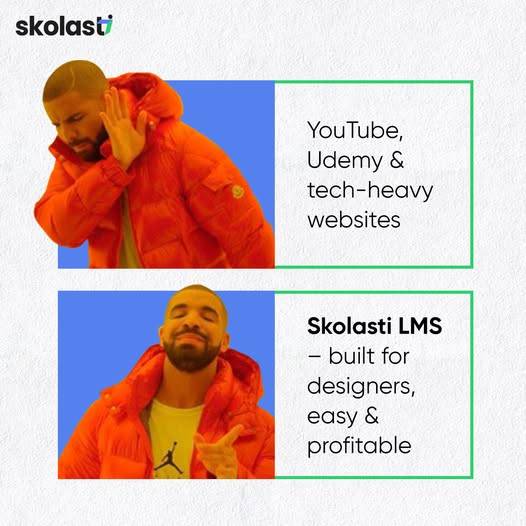#gamified learning platform
Explore tagged Tumblr posts
Text
AI-Powered Authoring: Revolutionizing Microlearning Content Creation with MaxLearn

Unlocking the Power of MaxLearn: A Feature-Driven Revolution in Corporate Training
In today’s fast-paced business world, traditional training methods are no longer sufficient. Employees need learning that is personalized, engaging, time-efficient, and results-driven. MaxLearn, a next-generation microlearning platform, addresses this need by combining science-backed methodologies with advanced technology, empowering organizations to optimize workforce performance and combat the Ebbinghaus Forgetting Curve. The platform’s robust set of features provides a comprehensive solution to modern training challenges. This article explores MaxLearn’s most impactful features and how they drive results across industries.
1. AI-Powered Authoring for Faster, Smarter Course Creation
MaxLearn streamlines content development with an intuitive AI-powered authoring tool. This feature allows L&D teams to generate high-quality microlearning content in minutes—eliminating the need for lengthy instructional design cycles. The AI suggests questions, adapts content formats, and can even auto-generate quizzes aligned to learning objectives. As a result, organizations can scale training rapidly while maintaining consistency and instructional integrity.
Moreover, MaxLearn’s authoring tool supports diverse content types including text, images, videos, audio clips, and infographics. This multimedia flexibility enhances engagement and accommodates different learner preferences, making content more accessible and effective.
2. Personalized Learning Paths for Targeted Skill Development
One of MaxLearn’s most transformative features is personalized learning paths. Unlike traditional one-size-fits-all training programs, MaxLearn uses learner profiles, job roles, and risk assessments to assign relevant content. These learning paths evolve over time, taking into account a learner’s performance, confidence levels, and behavior.
This tailored approach ensures that employees receive the right content at the right time, maximizing training efficiency and relevance. It also minimizes time spent on redundant or low-value modules—an essential feature for busy professionals balancing learning with productivity.
3. Gamification to Drive Engagement and Motivation
MaxLearn integrates a powerful gamification engine to make learning fun, competitive, and sticky. Learners earn points, badges, and ranks based on their performance. Leaderboards encourage friendly competition, while streaks and challenges maintain momentum.
Gamified microlearning increases user participation and knowledge retention by tapping into intrinsic motivators like achievement and recognition. Organizations using MaxLearn have reported a significant boost in course completion rates and learner satisfaction.
4. Combating the Forgetting Curve with Spaced Repetition
The Ebbinghaus Forgetting Curve demonstrates how quickly people forget newly acquired information. MaxLearn counters this phenomenon using spaced repetition algorithms that reintroduce concepts at scientifically calculated intervals. This ensures information is transferred to long-term memory and retained over time.
By combining repetition with adaptive questioning, MaxLearn helps learners achieve mastery in a fraction of the time required by conventional methods. The platform also measures knowledge decay and automatically schedules refreshers, closing the retention gap before it affects performance.
5. Risk-Focused Training to Ensure Compliance and Safety
MaxLearn uniquely integrates risk-focused training automation, making it invaluable for industries like finance, healthcare, and manufacturing. The platform identifies compliance and operational risks and dynamically assigns training to mitigate them.
For example, if a frontline employee exhibits a knowledge gap in a critical safety procedure, MaxLearn will instantly reassign relevant microlearning modules. This proactive approach not only protects the organization from regulatory breaches but also fosters a culture of continuous compliance and accountability.
6. Active Learning Feedback to Refine Content in Real-Time
Another standout feature is Active Learning Feedback, where learners can rate questions based on difficulty and flag problematic items. This feedback loop empowers L&D teams to refine content continuously based on real-time learner input.
By incorporating direct feedback into content optimization, MaxLearn ensures training remains relevant, appropriately challenging, and free of ambiguity. This enhances learner trust in the system and drives higher engagement over time.
7. Mobile-First Microlearning for Anytime, Anywhere Access
MaxLearn is built on a mobile-first architecture, enabling learners to access training from smartphones, tablets, or desktops. This flexibility is essential in today’s hybrid and remote work environments, where learners often need to engage with content in the flow of work.
Bite-sized microlearning modules, each designed to be consumed in under five minutes, make it easy for learners to complete lessons during short breaks or in between meetings—without disrupting productivity.
8. Adaptive Learning That Evolves with the Learner
MaxLearn’s adaptive learning engine dynamically adjusts content difficulty and sequencing based on a learner’s confidence and performance. If a learner struggles with a concept, the system provides more practice opportunities. If they demonstrate mastery, MaxLearn accelerates their path through the content.
This personalized pacing prevents disengagement from under- or over-challenging material and ensures all learners progress efficiently toward their training goals.
9. Real-Time Analytics and Progress Tracking
Effective training requires actionable insights. MaxLearn delivers granular analytics at both the organizational and individual levels. L&D leaders can track training progress, course completion rates, engagement metrics, knowledge retention, and ROI in real time.
This data-driven approach allows organizations to make informed decisions, identify at-risk employees, and continuously optimize their learning strategy.
10. “Quiz Me” Feature for On-Demand Reinforcement
The “Quiz Me” feature enables learners to test themselves on-demand using a bank of questions drawn from previously studied material. This reinforces learning while giving learners autonomy in their journey.
Self-testing also promotes metacognition—awareness of one’s own knowledge gaps—which is a critical component of adult learning.
11. Team Challenges to Foster Collaboration
In addition to individual gamification, MaxLearn offers team-based challenges to drive collective learning. These challenges promote collaboration, accountability, and healthy competition within departments or business units.
Teams can track their rankings, share insights, and celebrate learning wins together, turning training into a socially rewarding experience.
12. Multilingual Support for Global Workforces
MaxLearn supports multiple languages, making it a viable solution for multinational organizations with diverse teams. Content can be created or translated into various languages to ensure inclusivity and consistency in training delivery across regions.
13. Certifications and Learning Goals
To support formal development programs, MaxLearn offers certifications and goal-setting tools. These features allow learners to work toward milestones and gain credentials that align with their career growth.
Tracking progress toward certifications also provides visibility for managers and HR teams into employee development and readiness for advancement.
14. ROI Calculator to Demonstrate Business Impact
MaxLearn includes an ROI calculator that quantifies the return on training investments. This feature helps L&D departments justify budgets, prove effectiveness, and align training with business outcomes such as performance improvement, risk reduction, and cost savings.
15. Seamless Integration and Scalability
MaxLearn integrates seamlessly with existing LMS, HRIS, and compliance systems, allowing organizations to adopt the platform without major disruptions. Its scalable architecture supports both small teams and large enterprises, making it a versatile solution for organizations of any size.
Conclusion
MaxLearn isn’t just a microlearning platform—it’s a comprehensive training ecosystem built to align with how people learn, work, and grow in the modern world. From AI-driven content creation and personalized learning paths to gamification, spaced repetition, and real-time analytics, MaxLearn offers everything organizations need to drive performance, mitigate risk, and elevate learner engagement.
Whether your goal is to reduce compliance violations, upskill teams, or foster a culture of continuous learning, MaxLearn’s feature-rich platform is engineered to deliver results.
#AI Powered Authoring Tool#course creation platform#course authoring tools#gamified learning platform#adaptive learning technology#microlearning authoring tools#ai powered learning platform#gamified training platform#key learning points#what is key learning points#microlearning platforms#microlearning tools#microlearning platform#gamification learning platform#ai authoring tools for microlearning#microlearningplatform#microlearning#microlearningbestpractices#microlearningcontent#microlearningtraining#microlearningtheory#microlearningtopics#microlearningexamples#microlearningideas#microlearningexample#examplesofmicrolearningcourses#definemicrolearning#bestmicrolearningexamples#microlearningarticles#microlearningapps
0 notes
Text
The Importance And Benefits Of Gamification In STEM Education
The concept of Gamification is gaining a lot of momentum in the educational technology space. For STEM (science, technology, engineering, and mathematics) education especially, this type of pedagogy is perfectly suited to create a conducive learning environment, thus transforming it into a space that encourages student engagement, interaction, exploration, and retention.
A powerful technique that takes several elements from games and applies them to non-game contexts such as education, Gamification allows STEM educators to make learning more interactive and captivating for students.
In this post, we will explore the world of Gamification in learning and highlight different ways the technique can be used to encourage learners' motivation, foster engagement, and cultivate an interest in developing critical skills and knowledge among students.
What is Gamification?
As the name suggests, Gamification is the use of various game design elements and principles in non-game contexts, such as education, to increase learner participation and motivation.
The technique can include elements such as badges, leaderboards, points, levels, rewards, challenges, feedback, and more.
Likewise, Gamification can also involve applying various game mechanics in educational settings, such as goals, competition, rules, and interactivity, to create a more immersive and fun learning experience for students.
Examples of Gamification in Stem Learning
Below are some of the example of gamified STEM education-
Creating a specific theme or narrative that connects the concepts to either a real-world issue or a fictional scenario
Setting up a leaderboard or progress bar to display student progress
Designing quests that reward students with points, badges, or other similar incentives
Incorporating various elements of competition and offering feedback and recognition.
These are a few of the interesting gamification strategies that can help STEM educators motivate their students to keep trying and improving while also enjoying as well as celebrating their achievements.
How Does Gamification Help Stem Education?
There are several advantages of integrating Gamification in STEM education. Some of these are listed below-
1. Higher Engagement
Gamification is a technique that introduces several game elements such as levels, points, badges, and rewards, thus creating in learners a sense of achievement and progress. This, in turn, fosters motivation and makes learning much more fun. Students not only show increased engagement but also become more invested in their learning journey and achieve higher levels of mastery.
2. Enhanced Problem-Solving Skills
Another advantage of Gamification for STEM education is a holistic approach to learning that often presents students with complex challenges that require them to display problem-solving and critical-thinking skills.
By participating in such tasks, students develop great analytical skills along with the ability to approach problems from different angles, something that mirrors real-world STEM scenarios.
3. Growth Mindset
When it comes to creating successful learning outcomes, the most important thing is to help cultivate a growth mindset in students where they believe that their intelligence and ability can be developed.
Since games encourage learners to compete both against each other and themselves, there is always an incentive present to improve. In this context, learners who might be uninterested in STEM subjects can develop a liking for the game played and start developing a growth mindset.
4. Active Learning
The inclusion of gamified activities in STEM education involves a lot of interactive experiences, simulations, or problem-solving real-life scenarios. This shifts the focus of the learning from passive listening to active participation, where students are consistently encouraged to explore, experiment, and apply the knowledge they have acquired in practical situations.
How to Gamify STEM Learning?
To get maximum out of gamification techniques in the STEM education context, here are some of the ways you can employ to gamify learning successfully-
1. Incorporate Time-bound tasks
One of the key elements of games is that they have a specific period allotted to finish a particular task. Giving children a time limit to complete a given task is therefore important to gamify the learning.
When there is a timer put on, the students are more likely to be focused on the activity given and complete it on time. This fosters a sense of urgency and accomplishment in them of having completed the task in time.
2. Use Role-Playing Scenarios
Create scenarios where students play the roles of scientists, engineers, or tech experts solving real-world problems. This helps them understand the practical applications of STEM and develops problem-solving skills.
3. Introduce Leaderboard
Another interesting way to gamify STEM subjects is by placing visually designed leaderboards either in the classroom or integrated into the app. It will display the progress students make as individuals or as teams in the tasks or activities given to them. You could include leaderboards for behavior, timeliness, learning speed, and so on.
4. Present Challenges
Regardless of age, children love games that challenge them. Encouraging them to apply their learning to finish a given task, even if it appears tough in the beginning, is a great way to push them.
However, it's crucial to strike a balance in challenge design. Challenges should be simple and manageable, as finding the right level of difficulty is key to sustaining a child's interest and fostering continuous engagement.
Conclusion
Gamification holds great potential in the STEM education space. Educators and schools willing to embrace Gamification in their classrooms can get numerous benefits out of it as discussed above.
By implementing Gamification in STEM education, educators can ensure to generate confident learners who are better able to navigate technological advancements and inspire the next generation of scientists and engineers to help build a better future for everyone.
#gamification in learning#STEM Education#STEM subjects#gamified learning platform#Gamified STEM education#holistic approach to learning#critical skills and knowledge#technological advancements
0 notes
Text
LMS for Language Learning: Competing with Duolingo Through Smarter Features

Language learning platforms like Duolingo have transformed how people engage with new languages. But Learning Management Systems (LMS) can do more—offering structure, depth, and customization that gamified apps often lack.
Skolasti’s LMS is designed to support immersive, engaging, and goal-oriented language programs. Unlike app-based learning that’s mostly passive, LMS tools provide interactive assignments, live classes, community forums, and performance tracking.
With built-in features like pronunciation practice using AI, contextual quizzes, and culture-based projects, learners move beyond vocabulary memorization to real-world language fluency.
Teachers can also monitor student progress through analytics dashboards and adjust lessons accordingly. Plus, the ability to integrate multimedia—videos, podcasts, games—creates a multi-sensory learning experience.
Institutions and private tutors using Skolasti can offer full-fledged certification programs, set learning paths, and provide peer feedback—something Duolingo can’t replicate.
With a smart LMS, language learning becomes structured, accountable, and measurable—perfect for schools, universities, and training centers.
#lms language learning#gamified learning management system#lms language training#lms with virtual classroom#gamification learning management system#virtual classroom lms#virtual class platform#lms with gamification features#lms analytics and reporting tools#lms gaming#ar in elearning#lms gamification services#best gamification lms
0 notes
Text
How AI is Redefining Classrooms in 2025
📚 𝐀𝐈 𝐓𝐫𝐚𝐧𝐬𝐟𝐨𝐫𝐦𝐢𝐧𝐠 𝐄𝐝𝐮𝐜𝐚𝐭𝐢𝐨𝐧 𝐒𝐲𝐬𝐭𝐞𝐦 𝐢𝐧 𝟐𝟎𝟐𝟓 Education in 2025 isn’t just evolving—it’s being reimagined. AI is no longer a futuristic concept in classrooms; it's now a powerful partner in personalized, inclusive, and efficient learning across the globe.
🔍 𝐇𝐞𝐫𝐞’𝐬 𝐡𝐨𝐰 𝐀𝐈 𝐢𝐬 𝐫𝐞𝐬𝐡𝐚𝐩𝐢𝐧𝐠 𝐥𝐞𝐚𝐫𝐧𝐢𝐧𝐠:
✅ 𝐒𝐦𝐚𝐫𝐭 𝐓𝐮𝐭𝐨𝐫𝐬 & 𝐏𝐞𝐫𝐬𝐨𝐧𝐚𝐥𝐢𝐳𝐞𝐝 𝐋𝐞𝐚𝐫𝐧𝐢𝐧𝐠 AI-driven platforms adapt lessons to match each student's pace, style, and strengths—turning frustration into confidence.
✅ 𝐓𝐞𝐚𝐜𝐡𝐞𝐫 𝐒𝐮𝐩𝐩𝐨𝐫𝐭, 𝐍𝐨𝐭 𝐑𝐞𝐩𝐥𝐚𝐜𝐞𝐦𝐞𝐧𝐭 Grading, scheduling, and content suggestions are automated—freeing teachers to do what they do best: inspire and connect.
✅ 𝐑𝐞𝐚𝐥-𝐓𝐢𝐦𝐞 𝐋𝐚𝐧𝐠𝐮𝐚𝐠𝐞 𝐓𝐫𝐚𝐧𝐬𝐥𝐚𝐭𝐢𝐨𝐧 & 𝐒𝐮𝐩𝐩𝐨𝐫𝐭 Language barriers are disappearing as AI tools offer instant translation and multilingual support for diverse classrooms.
✅ 𝐄𝐪𝐮𝐢𝐭𝐲 𝐢𝐧 𝐄𝐝𝐮𝐜𝐚𝐭𝐢𝐨𝐧 Students in remote or underserved regions gain access to quality learning through AI-powered tools—bridging the opportunity gap.
✅ 𝐄𝐧𝐠𝐚𝐠𝐞𝐝, 𝐂𝐫𝐞𝐚𝐭𝐢𝐯𝐞 𝐂𝐥𝐚𝐬𝐬𝐫𝐨𝐨𝐦𝐬 AI encourages creativity through gamified learning, VR simulations, and collaborative platforms that make learning an experience.
💡 The result? Smarter systems, empowered teachers, and students who feel seen, supported, and excited to learn.
📌 𝐓𝐡𝐢𝐬 𝐢𝐬𝐧’𝐭 𝐭𝐡𝐞 𝐟𝐮𝐭𝐮𝐫𝐞—𝐢𝐭’𝐬 𝐡𝐚𝐩𝐩𝐞𝐧𝐢𝐧𝐠 𝐧𝐨𝐰. 𝐇𝐨𝐰 𝐢𝐬 𝐲𝐨𝐮𝐫 𝐬𝐜𝐡𝐨𝐨𝐥 𝐨𝐫 𝐨𝐫𝐠𝐚𝐧𝐢𝐳𝐚𝐭𝐢𝐨𝐧 𝐥𝐞𝐯𝐞𝐫𝐚𝐠𝐢𝐧𝐠 𝐀𝐈?
𝐂𝐮𝐫𝐢𝐨𝐮𝐬 𝐚𝐛𝐨𝐮𝐭 𝐭𝐡𝐞 𝐟𝐮𝐭𝐮𝐫𝐞 𝐨𝐟 𝐥𝐞𝐚𝐫𝐧𝐢𝐧𝐠? 𝐋𝐞𝐭’𝐬 𝐝𝐢𝐬𝐜𝐮𝐬𝐬!: https://shorturl.at/oi8jf
0 notes
Text
Gamified Learning Platforms: Enhancing the Experience with Audiobooks Online

The appeal of gamified learning platforms lies in its ability to transform traditional education methods into interactive experiences. By incorporating rewards, challenges, and progress tracking, learners feel a sense of accomplishment that fosters continued participation. Meanwhile, audiobooks offer an auditory dimension to learning, enabling users to consume literature and educational content without the constraints of a physical format.
Moreover, Audio books online support individuals with reading difficulties or visual impairments. They offer an alternative that can promote inclusivity in education, ensuring that more learners can access valuable resources.
Visit Now - https://greenwavetechs.com/gamified-learning-platforms-enhancing-the-experience-with-audiobooks-online/
0 notes
Text
Sooooo, I found a etho or Kakashi test by @echogarden1
(The idea was 100% echogarden1s idea so credit to them)
But they were unable to credit the artists cuz it was from Pinterest, so I made a new etho or Kakashi test with the tumbler accounts used on top of the art, and all credit to the amazing artists!!!
This is the test:
Would love to see this rebloged with yalls scores☺️
34 notes
·
View notes
Text



Current Japanese Study Routine + Resources 🎀
As you all may know, I am currently self studying Japanese and Spanish, though I am putting Spanish on the back burner for now so I can focus more on Japanese as that is where my passion lies at the moment. Lucky for me, there is a Japanese language and culture club on my university campus that I am (hopefully) going to join next week or the week after, given how busy my schedule ends up being. I thought I’d make a little post about my current routine that I use to study and what resources I am currently using and am planning on purchasing to use in order to build my proficiency in this beautiful language!
Current Resources 🩷
Apps - I am currently playing around with several apps to see which ones work for me, so here is all the apps I currently have downloaded to my iPad/phone
Duolingo - this has been a go to for all language I’ve ever tried to learn, it’s useful for me as a basic introduction to vocabulary, sentence structure, some grammar, and I just like how it involves typing, speaking, listening, and reading.
Drops - this one is just a fun little 5 minutes gamified way to learn vocabulary for me, it’s definitely a go to on my lazier language learning days
Bunpo - I like this for learning the kana but I didn’t realize it costs money to use fully so I am debating purchasing a subscription to the paid version
Write Japanese - this one I’m using to learn the correct stroke order for the kana and I like it for the most part
Renshuu - I just signed in to use this one last night and it looks interesting. I’ve seen it recommended by several blogs and even when google searching language learning and watching YouTube videos so I’m excited to try it out!
NHK for School - I saw someone recommend this on their blog and I remember using the website version in the past so I know this will be helpful when it comes to reading
Jisho - this is a dictionary app that I’ve seen recommended on so many platforms and I’m always open to a good dictionary!
Japanese - this one was recommended on a blog post and it allows you to add vocabulary and interesting phrases so I thought it’d be useful once I start on learning sentence structure and grammar
Italki - this one is the one I’m most excited to use. It connects you to people who speak and teach your target language for a set timed lesson, and it does cost money but you pay by lesson, not on a subscription basis. So if you do one lesson the first week and then another lesson in three weeks or something, you only pay for those two lessons. I’m really looking forward to trying this one out in the future once I get more comfortable with speaking.
Anki - a flash card app I am using to currently learn hiragana and will soon use for katakana and eventually kanji and phrases. I was gonna use Quizlet but I ended up liking this one better for my current needs.
LingoDeer, Memrise, Babbel, HiNative, HelloTalk, Hey Japan, Busuu, Kanji, Kana, Sensei - apps that I have and have not tried yet. I really like the ones I’ve already tried so I’m not sure if I’m going to use these ones soon but if I get bored of current apps than I at least have alternatives to turn to to continue learning
Textbooks/Workbooks/Materials - I currently own two workbooks but will include the resource I am planning on buying, as well as any stationery material I am also using!
Japanese for Busy People I - This was the workbook we had for the Japanese class I took at my university while in high school. My dad ended up buying it for me if I promised not to take Japanese classes once I went to college. (My parents don’t believe it is useful to know and they are helping pay for my education so I didn’t have a choice.) I haven’t started reusing it yet but once I am comfortable with the kana then I will resume using it.
Let’s Learn Katakana - this is a katakana writing book my older brother bought for me (he is supportive of everything I have an interest in even if he doesn’t understand it himself) and it is really useful for learning and practicing writing katakana. However I am still focusing on relearning hiragana so I will return to this workbook after I solidify my hiragana knowledge.
Genki I and Genki II textbook/workbook + answer key bundle - I am planning to buy this off of Amazon as I have heard from most people who are learning Japanese on their own that this set is really useful for self studying so of course I am going to invest in it once I get paid next week.
I am also looking for a hiragana, katakana, and kanji writing workbook to practice those skills.
Free Online Resources -
YouTube!
Anime!
Music
Manga
Anything free I can find online when google searching resources
Stationary Supplies -
Kokuyo Campus Smart Ring Binder in pink
Tombow Fudenosuke Brush Pens in black
Index cards
Pilot g-2 fashion pens
Zebra mild liner highlighter/markers
Papermate Mechanical Pencils
Mini notebook to carry around for vocabulary
My iPad + Apple Pencil + Goodnotes 5
My Chromebook
A lot of resources but I am trying to stick with this for the long term. A few years ago, I self studied Japanese everyday for about 2 years and gained a good understanding but fell off from studying Japanese when I went to university.
My Current Study Routine* 🎀
*when I have more than 30 minutes to study, if I only have 30 minutes or less I just mess around on my language apps
I currently do not use any workbooks or textbooks as I am trying to re familiarize myself with the language. Here’s my current study routine!
Practice Anki flashcards 3 times or until I get 85-90% correct
Practice hiragana writing in Write Japanese app (~10min)
Duolingo lessons for 10 minutes
1 Japanese language Drops lesson
Use Renshuu until I get bored (~10-15min)
Watch an episode of anime as a reward (Japanese audio with English subtitles)
I will switch this up to a more structured way of studying once I start using my textbooks and workbooks, but for now this relaxed style of learning is working for me time wise and attention wise (ADHD brain right here).
I also listen to Japanese music throughout the day and try to recall hiragana characters correctly in my head when I have the time. I also sneak in some practice when at work on my apps and whatnot. I mentioned in my last daily check in some of my favorite Japanese artists, and I also love Japanese versions of K-pop songs too! I’m currently watching Bungou Stray Dogs on crunchyroll right now, and I’m open to any recommendations for what to watch next!
If anyone has any language learning tips or resources they’d want to share, feel free to comment! It would be greatly appreciated!
Til next time my lovelies 🩷🤍
#pink pilates girl#pink pilates princess#self care#self development#self love#wonyoungism#health & fitness#mental health#it girl#physical health#japanese language learning tips#language learning tip#language resources#language learning tips#language learning#langblr#studyspo#college studyblr#vanilla girl#green juice girl#coquettecore#college study tips#coquette girl#study tips#studyblr#studyinspo#foreign languages#language tips#pink academia#pink blog
211 notes
·
View notes
Text
Here are seven ways to make programming more engaging for beginners.
Introduction
For newcomers, programming might be frightening. For many, the new material's syntax, logic, and sheer amount might be depressing. Nonetheless, programming doesn't have to be very difficult or tiresome. Programming can be made more engaging and fulfilling by incorporating innovative, enjoyable, and useful methods. This article will examine seven methods for improving novice programmers' engagement, which will make learning programming easier and more pleasurable.
1. Start With Visual Programming Tools
Start with visual programming tools like Scratch, Blockly, or Tynker before writing complex code. Using these platforms, novices can drag and drop code blocks to construct simple programs, games, and animations. Visual tools make learning more interactive and enjoyable by breaking down complicated programming concepts and provide instantaneous visual feedback.
Benefits:
Improves understanding of programming fundamentals.
Allows newcomers to see the effects of their efforts immediately.
Encourages creativity through cartoons and games.
2. Focus On Interactive Learning Platforms
Students can write code directly in their browsers and see the results in real time with interactive classes offered by platforms like Codecademy, Khan Academy, and freeCodeCamp. These platforms often provide assistance or instant feedback and break down programming into manageable tasks. Interactive learning helps users solve difficulties and keeps the learning process moving forward while lowering irritation.
Benefits:
Immediate feedback allows for easy error correction.
Lessons are organised into convenient parts.
Gamified learning systems can help to sustain engagement.
3. Work On Real-Life Projects Early
Learning programming through real-world applications increases its relevance and fun factor. Novices can concentrate on projects that pique their interest, such creating a simple app, automating a tedious task, or creating a personal website. Students get a feeling of purpose from real-world projects, which piques their interest in coding and makes them more enthusiastic about it.
Benefits:
Improves understanding of theoretical concepts.
Increases confidence as students create actual things.
Offers a clear purpose and a sense of accomplishment.
4. Learn Through Games
Learning programming can be facilitated by creating or playing games. Some examples of platforms and games designed specifically for teaching programming are CodeCombat, Robocode, and CheckiO. Through the resolution of code puzzles, students advance in these games that transform coding assignments into adventures.
Benefits:
Creates a fun and competitive learning atmosphere.
Encourages critical thinking and problem-solving skills.
Engages students who may find standard lessons unappealing.
5. Incorporate Pair Programming
When two programmers work together on a single task, it's called pair programming. Real-time code reviews are performed by one person after it has been written. Through discussion and shared knowledge, this collaborative learning approach helps students acquire problem-solving methods while also making programming more socially engaging.
Benefits:
Promotes teamwork and communication skills.
Provides fast feedback and reduces errors.
Helps to overcome learning plateaus through shared expertise.
6. Celebrate Small Wins
Programming can occasionally seem like a laborious process with little payoff, especially when faced with challenging problems. It's crucial to acknowledge small accomplishments in order to stay motivated. Acknowledging successes, no matter how small, can give much-needed morale support.
Benefits:
Encourages an optimistic approach to learning.
Recognising progress helps to boost confidence.
Reinforces a growth mentality, increasing learners’ resilience.
7. Join Coding Communities
Learning to program could be more enjoyable if you're a part of a helpful group. Newcomers can participate in local coding meetings and online forums like Stack Overflow and GitHub. These websites offer opportunities for collaboration, mentoring, and inspiration from people who share similar interests.
Benefits:
Access to a plethora of common knowledge.
Promotes collaboration on open-source initiatives.
Creates a network of mentors and peers to share experiences and insights.
Conclusion
By using these suggestions, learning to program doesn't have to be a daunting task; instead, it can be interesting and fun. In order to keep beginners interested in programming and inspired, we at the School of Coding & AI employ a variety of strategies, including interactive tools, real-world projects, and community involvement.
#coding#programming#branding#marketing#python#commercial#graphic design#student life#study motivation
26 notes
·
View notes
Text
How to Choose the Right E-Learning App Development Company for Your EdTech Idea?
E-Learning App Development Services

The demand for online education is skyrocketing, and if you have a great EdTech idea, the next important step is choosing the right development partner. A skilled and reliable team can turn your idea into a feature-rich, user-friendly learning app. But how do you find the right company for E-Learning App Development?
Understand Your Requirements
Before reaching out to any company, be clear about your goals. What features do you need? Will your app support live classes, quizzes, student dashboards, or gamified learning? Knowing your core features helps you evaluate which E-Learning App Development companies align with your goals.
Look for Experience in EdTech
Not all app developers understand the unique needs of the education sector. Choose a company or professional service provider with a proven track record and clear history in E-Learning App Development. Ask for case studies, client references, and apps they’ve already built and are being used for learning platforms. This gives you confidence in their ability to handle your project and helps to be efficient in future.
Evaluate Technical Skills and Tools
The right partner or the company should be familiar with the modern tools and frameworks, including AI integration, real-time video, cloud storage, and scalable databases and number of resources that are included within the system. Ensure they can develop for Android, iOS, or the web, depending on your target audience. Also, assess their UI/UX design capabilities to ensure a smooth learning experience for users.
Check Support and Maintenance Services
Development doesn’t end after the app launches. Choose a company or experts that offers and assists with long-term technical support and brief assistance, regular updates, and maintenance services with their offerings. This assures that your E-Learning App Development project stays functional and secure as your user base grows and results towards success in the long term.
Building a high-retention e-learning app requires expertise and professional approach in user experience design, AI-driven personalization, and engagement strategies which results in best end result.The right development company and service provider brings your EdTech vision to life. Look for a team that understands the education sector, offers customized solutions, and communicates clearly throughout the process. Reliable companies like Suma Soft, IBM, and Cyntexa are known and specialized for delivering high-quality, scalable e-learning platforms and applications that match the modern educational needs. Partnering with an experienced team that assures your learning app meets the market demands and provides real value to learners.
#it services#technology#saas#software#saas development company#saas technology#digital transformation
3 notes
·
View notes
Text
The Use of AI in Early Education and Its Impact on Children at an Early Age
This blog examines how AI is used in early childhood education, its benefits, potential concerns, and how parents and teachers can use it wisely.
Introduction We now live in a world where artificial intelligence (AI) is no longer just a fantasy. It is changing how we live, work, and learn. One of the most exciting developments is using AI in early childhood education. From smart tutors and adaptive learning apps to speech recognition and personalized content, AI is changing how our youngest learners engage with knowledge. But how early is too early? And what impact does AI have on developing minds?
In this blog, we examine how AI influences early education, the benefits and challenges it brings, and what this means for future learners.

How Is AI Used in Early Childhood Education? AI is being incorporated into early education in various creative and effective ways. Here are some main applications:
Personalized Learning Apps AI-powered platforms like Khan Academy Kids, ABCmouse, and Osmo adjust to a child’s learning pace and style. These apps can recommend content, track progress, and automatically change difficulty based on performance.
Speech Recognition & Language Learning Tools like Google Read Along and Duolingo ABC use AI to help kids with pronunciation, vocabulary, and reading skills. They provide immediate feedback, making the learning experience feel engaging and personal.
Gamified Learning and Engagement AI-driven games help keep young learners interested while they solve puzzles, recognize patterns, or practice basic math, all while receiving personalized assistance based on their behavior.
Early Diagnosis of Learning Disabilities Some AI tools can spot early signs of learning issues like dyslexia, speech delays, or ADHD. This enables teachers and parents to intervene early with the right support.
AI Assistants in the Classroom Robots and voice-based assistants, like Miko or smart speakers, are being used in classrooms to answer student questions, tell stories, and encourage interaction.
Positive Impacts of AI on Young Children When designed thoughtfully and used ethically, AI can greatly benefit early education:
Personalized Learning Journeys Each child learns in their way. AI can customize content to fit individual strengths and weaknesses, making learning easier and more rewarding.
Improved Engagement and Motivation Interactive content keeps kids curious and motivated, especially in home-based or remote settings.
Real-time Feedback Children do not have to wait for a teacher’s input. AI tools can instantly correct their mistakes and guide them along.
Early Intervention AI helps identify learning barriers early, allowing for prompt action before issues worsen.

Challenges and Concerns While the benefits are encouraging, there are some issues we should consider:
Screen Time Overload Too much screen time, even for educational content, can lead to shorter attention spans and may affect social development.
Data Privacy Children's data must be handled carefully. Many parents worry about what information is collected and how it is used.
Overreliance on Technology Children still need human interaction to build empathy, social skills, and critical thinking — areas where AI cannot currently replace human input.
Teacher Displacement Myths AI is not a substitute for teachers. It is a tool to support and enhance what educators already do well.
The Role of Parents and Teachers AI can be a valuable assistant, but human guidance is essential. Parents and teachers must:
Guide the use of AI tools
Set time limits
Choose age-appropriate and ethical platforms
Combine digital and real-world learning experiences
AI should not take the place of playtime, storytelling, and social activities — it should complement them.
Conclusion Integrating AI into early education offers great potential. It creates opportunities for personalized, inclusive, and interactive learning experiences. However, as we embrace this digital change, we must ensure that children's emotional, social, and cognitive development remains a priority.
When used wisely, AI can empower the next generation — not only to learn better but also to think creatively, solve problems, and grow with confidence.
Frequently Asked Questions (FAQ) Q1: Is AI safe for children in early education? A: Yes, when supervised by adults and using reputable platforms that prioritize data privacy and age-appropriate content, AI can be safe and effective.
Q2: Can AI replace teachers in preschools or early grades? A: No. AI can support and enhance teaching, but it cannot replicate the emotional intelligence, creativity, and empathy of a human teacher.
Q3: What are some good AI tools for early learners? A: Popular tools include Khan Academy Kids, Google Read Along, Duolingo ABC, Osmo, and Miko the robot.
Q4: How can parents manage screen time with AI tools? A: Set daily screen time limits, complement AI learning with real-world activities, and ensure regular breaks and outdoor play.
Q5: Can AI help children with learning difficulties? A: Yes, some AI tools can identify early signs of learning disorders and offer tailored support, allowing educators and parents to take early action.
This blog discusses how AI is being integrated into early childhood education and its potential effects on young learners. AI is changing education through personalized learning apps, speech recognition tools, interactive games, and early detection of learning disabilities. It provides benefits like customized learning experiences, immediate feedback, increased engagement, and support for early intervention.
However, the blog also addresses concerns such as excessive screen time, data privacy, and the need for human interaction in a child's growth. It emphasizes that AI should complement, not replace, teachers and caregivers. Adults play a crucial role in guiding the ethical and balanced use of AI tools.
In summary, when used responsibly, AI can greatly improve early education by making learning more adaptable, inclusive, and engaging for children while still maintaining the importance of human interaction and social-emotional growth.
3 notes
·
View notes
Text
MaxLearn Features: How AI-Powered Microlearning is Transforming Training

MaxLearn Features: Revolutionizing Learning with AI-Powered Microlearning
In today’s fast-paced world, traditional learning methods are struggling to keep up with the demands of modern learners. Organizations need efficient, engaging, and personalized training solutions that maximize knowledge retention while minimizing learning time. MaxLearn, a cutting-edge microlearning platform, is transforming the learning landscape with its powerful AI-driven features.
From adaptive learning and gamification to AI-powered personalization and advanced analytics, MaxLearn offers a robust set of tools that enhance engagement, improve learning outcomes, and drive better training ROI. In this article, we’ll explore the key features of MaxLearn and how they contribute to creating a superior learning experience.
1. AI-Powered Adaptive Learning
One of MaxLearn’s standout features is its AI-driven adaptive learning technology. Unlike traditional one-size-fits-all training methods, MaxLearn tailors content to individual learners, ensuring they receive the right training at the right time.
How Adaptive Learning Works in MaxLearn:
✅ Personalized Learning Paths – The AI analyzes learner performance and adjusts training modules based on their strengths and weaknesses. ✅ Dynamic Content Recommendations – Learners receive customized content based on their progress, ensuring continuous skill improvement. ✅ Real-Time Adjustments – The system identifies knowledge gaps and provides additional reinforcement where needed.
By personalizing learning, MaxLearn helps employees learn faster, retain more information, and apply knowledge effectively in their roles.
2. Gamification for Maximum Engagement
One of the biggest challenges in corporate training is low engagement. MaxLearn tackles this by integrating gamification elements into its learning experience, making training fun and interactive.
Key Gamification Features in MaxLearn:
🎮 Points & Badges – Learners earn rewards as they progress, keeping them motivated. 🏆 Leaderboards – Encourages healthy competition by ranking learners based on their achievements. 🎯 Challenges & Quizzes – Interactive elements make learning more engaging and enjoyable.
Gamification boosts motivation, increases completion rates, and enhances knowledge retention, making learning an exciting journey rather than a tedious task.
3. AI-Powered Personalization
MaxLearn leverages artificial intelligence to deliver a highly personalized learning experience. The platform analyzes learner behavior, preferences, and progress to curate content that aligns with their needs.
How AI Personalization Works in MaxLearn:
🤖 Smart Content Curation – Learners receive tailored recommendations based on their learning patterns. 📊 Automated Performance Insights – AI continuously tracks progress and suggests improvement areas. 🔁 Spaced Repetition – Reinforces critical concepts at optimal intervals to improve long-term retention.
AI-powered personalization ensures every learner gets a customized experience, making training more effective and aligned with individual goals.
4. Microlearning for Faster Knowledge Absorption
Microlearning is at the core of MaxLearn’s approach. Instead of long, overwhelming courses, learners receive bite-sized lessons that are quick to consume, easy to understand, and immediately applicable.
Why Microlearning Works:
⏳ Short & Focused Lessons – Each module lasts 5-10 minutes, perfect for today’s busy professionals. 💡 Single Concept per Lesson – Focuses on one key takeaway at a time, reducing cognitive overload. 📱 Mobile-Friendly – Learners can train anytime, anywhere, making learning more convenient.
Microlearning enhances retention and application, helping learners grasp concepts quickly and efficiently.
5. AI-Powered Assessments & Feedback
Assessments are crucial in measuring learner progress, and MaxLearn takes it a step further with AI-powered evaluations that go beyond traditional quizzes.
Advanced Assessment Features in MaxLearn:
📝 AI-Generated Quizzes – The system dynamically creates personalized assessments based on learning history. 🔍 Real-Time Feedback – Learners receive instant feedback to help them improve continuously. 📈 Performance Analytics – Employers can track progress, identify skill gaps, and refine training strategies.
By leveraging AI in assessments, MaxLearn ensures that training is effective, measurable, and data-driven.
6. Just-in-Time Learning for Real-World Application
Employees often need to apply knowledge on the job immediately. MaxLearn’s Just-in-Time Learning feature provides quick access to relevant training materials when needed.
Key Benefits of Just-in-Time Learning:
✅ On-Demand Access – Employees can pull up training resources whenever they need assistance. ✅ Performance Support Tools – Short instructional videos, quick guides, and FAQs enhance real-world problem-solving. ✅ Mobile-Optimized Content – Ensures seamless access to learning materials on any device.
This feature empowers employees to perform better in their roles by giving them access to critical knowledge when they need it most.
7. Risk-Focused & Compliance Training
Many organizations struggle with keeping employees updated on compliance regulations. MaxLearn simplifies compliance training with engaging, risk-focused microlearning modules.
Why MaxLearn is Perfect for Compliance Training:
🔍 Regulatory Updates in Real-Time – Keeps employees informed on changing policies. 📜 Interactive Compliance Courses – Engaging formats increase retention of critical compliance information. 📊 Automated Tracking & Reporting – Employers can monitor compliance completion rates and ensure regulatory adherence.
By integrating compliance training into everyday workflows, MaxLearn ensures employees remain aware, engaged, and compliant.
8. Seamless Integration with LMS & LXP
MaxLearn is designed to integrate seamlessly with existing Learning Management Systems (LMS) and Learning Experience Platforms (LXP), making it easy to implement within an organization’s current training ecosystem.
How MaxLearn Integrates with LMS & LXP:
🔄 Easy Data Syncing – Syncs learner progress and reports with existing platforms. 📂 SCORM & xAPI Compatibility – Ensures smooth content migration and tracking. 📈 Advanced Analytics Integration – Provides a holistic view of learner performance.
These integrations make it simple for organizations to enhance their existing training programs with MaxLearn’s innovative features.
9. AI-Driven Analytics for Smarter Decision-Making
MaxLearn doesn’t just deliver training—it provides actionable insights to help organizations make informed decisions.
Key AI-Driven Analytics Features:
📊 Learner Engagement Reports – Track which modules are most effective. 📉 Performance Metrics – Identify knowledge gaps and areas that need improvement. 📅 Training ROI Analysis – Measure the impact of training programs on employee performance.
With real-time analytics, companies can optimize their training strategies for better results and efficiency.
Why Choose MaxLearn?
MaxLearn is not just another learning platform—it’s an AI-powered, microlearning-driven solution that transforms corporate training, employee development, and compliance education.
Key Benefits of MaxLearn:
✅ Highly Engaging Gamified Learning Experience ✅ AI-Powered Personalization for Maximum Efficiency ✅ Faster Knowledge Absorption with Microlearning ✅ Seamless Integration with Existing Learning Platforms ✅ Real-Time Data & Insights for Continuous Improvement
Whether you're looking to improve employee performance, boost engagement, or enhance compliance training, MaxLearn offers the tools to make learning smarter, faster, and more effective.
🚀 Ready to revolutionize your training? Explore MaxLearn’s features today and experience the future of learning!
#AI Powered Authoring Tool#course creation platform#course authoring tools#gamified learning platform#adaptive learning technology#microlearning authoring tools#ai powered learning platform#gamified training platform#key learning points#what is key learning points#microlearning platforms#microlearning tools#microlearning platform#gamification learning platform#ai authoring tools for microlearning
0 notes
Text
2 notes
·
View notes
Text
5 Reasons Why Virtual Classroom Platforms Are Here to Stay

Virtual classrooms have shifted from a temporary pandemic solution to a permanent fixture in modern education. But what makes these platforms so effective—and why are they becoming essential?
1. Flexibility & Accessibility: Learners can join from anywhere, eliminating geographic barriers. This opens doors for rural students, remote teams, and international participants.
2. Real-Time Interaction: Modern virtual classroom platforms like Skolasti offer video conferencing, screen sharing, and breakout rooms. These features mimic real-life classrooms, encouraging collaboration and discussion.
3. Resource Integration: Digital whiteboards, document sharing, and cloud libraries streamline the learning process. Instructors can seamlessly share materials and assign tasks on the go.
4. Personalized Learning: Instructors can track participation, assign differentiated content, and use data-driven insights to tailor instruction.
5. Scalability & Cost Efficiency: Institutions and businesses can reach large audiences without physical infrastructure, reducing overhead while expanding their reach.
With features that go beyond basic video conferencing, virtual classroom platforms provide a dynamic and inclusive learning environment for the future.
#virtual classroom platforms#lms support services#lms language learning#gamified learning management system#lms language training#lms with virtual classroom#lms analytics and reporting tools#lms gaming#ar in elearning#lms gamification services#best gamification lms
0 notes
Text
Gimkit is an online learning platform designed to engage students through interactive quizzes that resemble video games. Created by Mitch, a high school student, Gimkit was born out of frustration with traditional methods of studying. Mitch wanted to find a way to make learning more enjoyable and motivating. Thus, Gimkit was developed to gamify education, combining the excitement of gaming with the effectiveness of quiz-based learning. Visit our website for more information.
3 notes
·
View notes
Text
Automate Farming in Minecraft: A Coding Adventure
By Mr. Fluffernutter Ah, the simple life of a Minecraft farmer—tending crops, harvesting wheat, and replanting for the next season. It all sounds so peaceful, doesn’t it? But what if I told you that villagers could work even smarter, just like real-world AI-powered farmers? Imagine a world where these pixelated characters maximize their efficiency, transforming vast fields of crops into…
#agriculture#AI in education#AI-powered learning#best coding platforms for kids#block-based coding#coding activities#coding curriculum#coding for kids#coding logic#collaborative learning#computational thinking#computer science for kids#creativity in coding#digital literacy#early childhood coding#educational technology#farming#future of education#game-based learning#gamified learning#hands-on learning#interactive learning#learning through play#Minecraft coding#minecraft education edition#problem-solving skills#programming for beginners#Redstone coding#Scratch vs Minecraft#STEM education
0 notes
Text
Digital Marketing in 2025: Trends, Tools, and Strategies for the Future
Its 2025, businesses must remain ahead of the curve to remain competitive in the rapidly evolving field of digital marketing. Digital marketing in 2025 will be more data-driven, customer-focused, and interactive than ever thanks to the most recent developments in AI, personalization, and user behavior analysis.
What’s New in Digital Marketing in 2025?
1. AI-Powered Marketing
Artificial intelligence is now at the core of most marketing tools. From content generation to predictive analytics and chatbots, AI is enabling brands to automate processes while enhancing customer experience.
2. Hyper-Personalization
Generic content no longer cuts it. Brands in 2025 are using real-time data and machine learning to deliver hyper-personalized content, emails, and ads tailored to individual user preferences and behaviors.
3. Voice Search & Conversational Marketing
With the increasing use of voice assistants, optimizing for voice search has become a must. Conversational marketing through chatbots and messaging apps is also revolutionizing how businesses interact with customers.
4. Video-First Content Strategy
Short-form videos dominate platforms like Instagram Reels, YouTube Shorts, and TikTok. Brands are investing in video content not just for awareness but also for conversions, product demos, and testimonials.
5. Privacy-First Marketing
As privacy regulations tighten and third-party cookies fade out, marketers in 2025 rely heavily on first-party data, ethical tracking, and consent-based marketing strategies.
Top Digital Marketing Strategies for 2025
SEO 2.0: Search engines are prioritizing user experience signals, mobile usability, and voice search optimization. Semantic search and intent-focused content are critical.
Omnichannel Integration: Consistent brand messaging across platforms—social, email, web, apps—is key to improving customer journeys and retention.
Micro-Influencer Collaborations: Niche influencers with loyal audiences offer high engagement and authenticity.
Interactive & Immersive Content: AR filters, interactive quizzes, and gamified experiences increase engagement and dwell time.
Sustainability Marketing: Brands that showcase ethical practices and sustainability efforts attract conscious consumers.
Tools Dominating Digital Marketing in 2025
AI Content Tools: ChatGPT, Jasper, Copy.ai
Analytics Platforms: Google Analytics 4, Mixpanel, Heap
Marketing Automation: HubSpot, ActiveCampaign, Klaviyo
Social Media Management: Buffer, Later, Hootsuite
SEO & SEM: Semrush, Ahrefs, Surfer SEO
Final Thoughts
Transparency, intelligent technology use, and meaningful engagement are key components of digital marketing in 2025. In this next stage of the digital era, brands that adjust to these changing trends and put the needs of their customers first will prosper.
Now is the time to revisit your digital strategy and align it with the future. 2025 calls for audacious, creative, and customer-focused marketing initiatives, whether that be through embracing AI, improving personalization, or producing immersive content.
Are you prepared for digital marketing's future?
2 notes
·
View notes